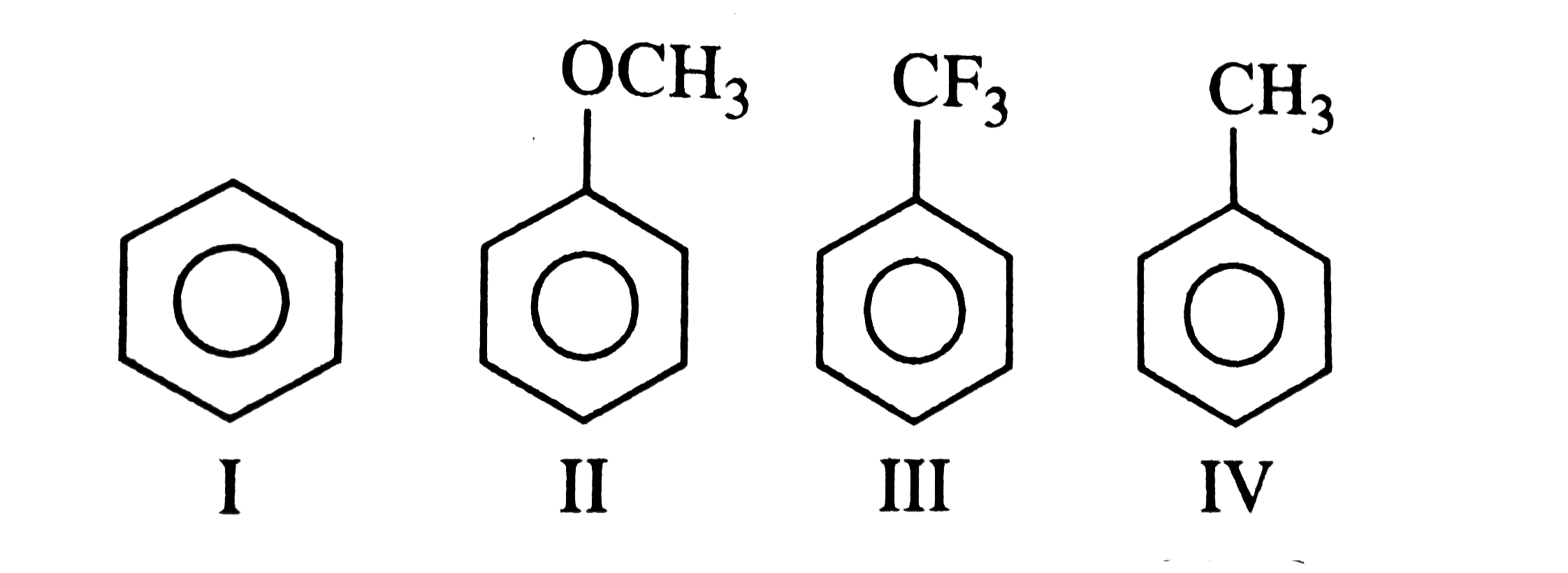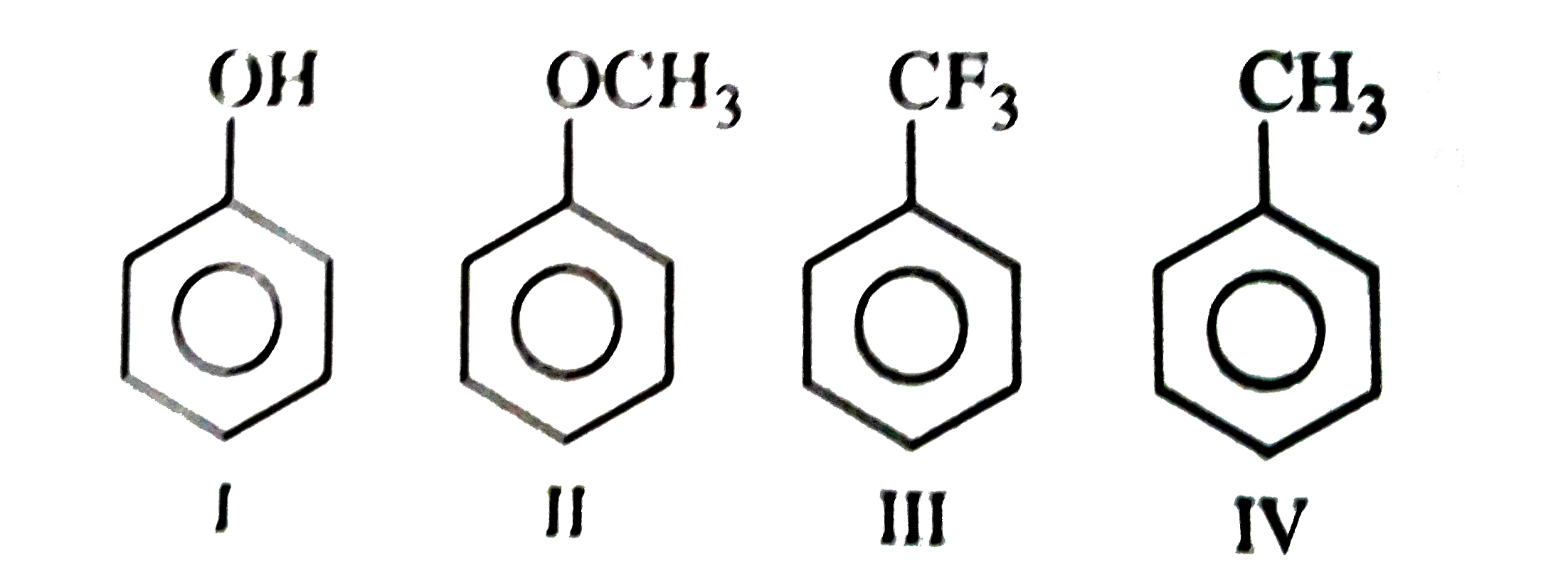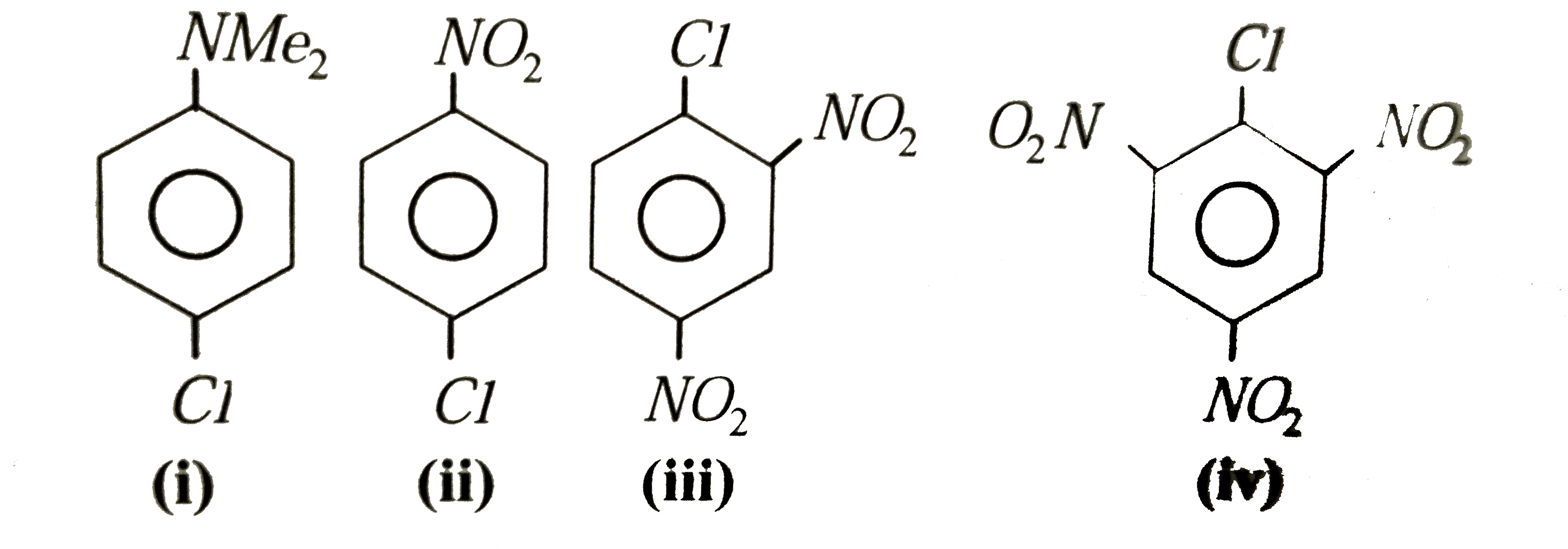Give reason for the following
When group is present at ortho position of chlorobenzene it increases the reactivity of chlorobenzene towards nucleophilic substitution reaction.
To understand why the presence of a nitro group (NO2) at the ortho position of chlorobenzene increases its reactivity towards nucleophilic substitution reactions, we can break down the explanation into several steps:
1. Understanding Chlorobenzene Structure:
- Chlorobenzene is a benzene ring (C6H5) with a chlorine atom (Cl) attached to it. The structure can be represented as C6H5-Cl.
2. Position of the Nitro Group:
- When a nitro group (NO2) is present at the ortho position relative to the chlorine atom, it means that the NO2 group is attached to one of the carbon atoms adjacent to the carbon that holds the chlorine.
3. Nature of the Nitro Group:
- The nitro group is an electron-withdrawing group due to its -I (inductive) and -M (mesomeric) effects. This means it pulls electron density away from the benzene ring.
4. Mechanism of Nucleophilic Substitution:
- In nucleophilic substitution reactions, a nucleophile (an electron-rich species) attacks the carbon atom bonded to the chlorine atom. The bond between carbon and chlorine (C-Cl) is broken, leading to the formation of a carbocation or a negatively charged intermediate.
5. Resonance Stabilization:
- When the nucleophile attacks the carbon, the electrons from the C-Cl bond shift towards the chlorine, creating a resonance-stabilized intermediate. The presence of the nitro group at the ortho position stabilizes this intermediate by delocalizing the negative charge through resonance.
6. Effect of Nitro Group on Reactivity:
- The -I and -M effects of the nitro group increase the stability of the negative charge formed during the reaction. A more stable intermediate means that the reaction can proceed more readily, thus increasing the reactivity of chlorobenzene towards nucleophilic substitution.
7. Conclusion:
- Therefore, the presence of the nitro group at the ortho position enhances the reactivity of chlorobenzene in nucleophilic substitution reactions due to the electron-withdrawing effects of the nitro group, which stabilize the negative charge on the intermediate formed during the reaction.
- Chlorobenzene is a benzene ring (C6H5) with a chlorine atom (Cl) attached to it. The structure can be represented as C6H5-Cl.
- When a nitro group (NO2) is present at the ortho position relative to the chlorine atom, it means that the NO2 group is attached to one of the carbon atoms adjacent to the carbon that holds the chlorine.
- The nitro group is an electron-withdrawing group due to its -I (inductive) and -M (mesomeric) effects. This means it pulls electron density away from the benzene ring.
- In nucleophilic substitution reactions, a nucleophile (an electron-rich species) attacks the carbon atom bonded to the chlorine atom. The bond between carbon and chlorine (C-Cl) is broken, leading to the formation of a carbocation or a negatively charged intermediate.
- When the nucleophile attacks the carbon, the electrons from the C-Cl bond shift towards the chlorine, creating a resonance-stabilized intermediate. The presence of the nitro group at the ortho position stabilizes this intermediate by delocalizing the negative charge through resonance.
- The -I and -M effects of the nitro group increase the stability of the negative charge formed during the reaction. A more stable intermediate means that the reaction can proceed more readily, thus increasing the reactivity of chlorobenzene towards nucleophilic substitution.
- Therefore, the presence of the nitro group at the ortho position enhances the reactivity of chlorobenzene in nucleophilic substitution reactions due to the electron-withdrawing effects of the nitro group, which stabilize the negative charge on the intermediate formed during the reaction.
Topper's Solved these Questions
- PRACTICE PAPER 3BOOK - CBSE COMPLEMENTARY MATERIALCHAPTER - PRACTICE PAPER 3EXERCISE - Very Short Answer Type Questions
32 Videos
- PRACTICE PAPER 1BOOK - CBSE COMPLEMENTARY MATERIALCHAPTER - PRACTICE PAPER 1EXERCISE - Questions
82 Videos
- PRACTICE PAPER 4BOOK - CBSE COMPLEMENTARY MATERIALCHAPTER - PRACTICE PAPER 4EXERCISE - SECTION : C
39 Videos
Similar Questions
Give reasons for the following
(a) The presence of −NO2 group at ortho or para position increases the reactivity of haloarenes towards nucleophilic substitution reactions .
(b) p-dichlorobenzene has higher melting point than of ortho or meta isomer .
(c) Thionyl chloride method is preferred for preparing alkyl chloride from alcohols.
View SolutionBenzyl chloride is more reactive than chlorobenzene towards nucleophilic substitution. Explain.
View Solution
Knowledge Check
The correct order of reactivity towards nucleophilic substitution reaction is
ACH3F>CH3Cl>CH3Br>CH3IBCH3I>CH3Br>CH3Cl>CH3FCCH3I>CH3Cl>CH3Br>CH3FDCH3I>CH3Br>CH3F>CH3ClThe most reactive of the following towards electrophilic substitution reaction is
 AIBIICIIIDIV
AIBIICIIIDIVThe order of reactivity of the following towards electrophillic substitution reaction is
 AI > II > III > IVBII > III > I > IVCIII > I > IV > IIDI > II > IV > III
AI > II > III > IVBII > III > I > IVCIII > I > IV > IIDI > II > IV > III
Which of the following is most reactive toward nucleophilic substitution reaction ?
View SolutionOrder of reactivity towards nucleophilic substitution reaction of the compounds

View SolutionGive reason :
The presence of nitro group (−NO2) at o/p positions increases the reactivity of haloarenes towards nucleophilic substitution reactions.
View Solution
what is the correct order of the reactivity of the following compounds towards nucleophilic substitution reaction.
View SolutionWhich of the following is the most reactive towards nucleophilic substitution reaction ?
View Solution
